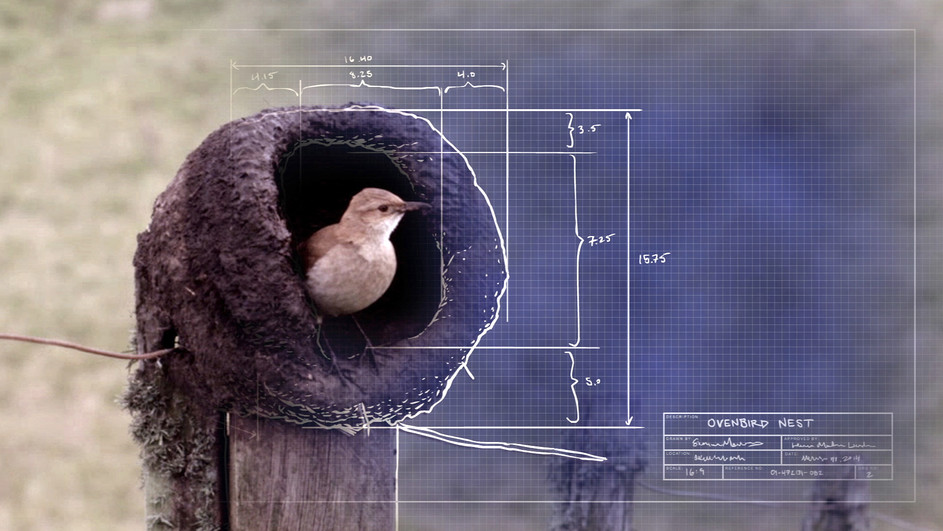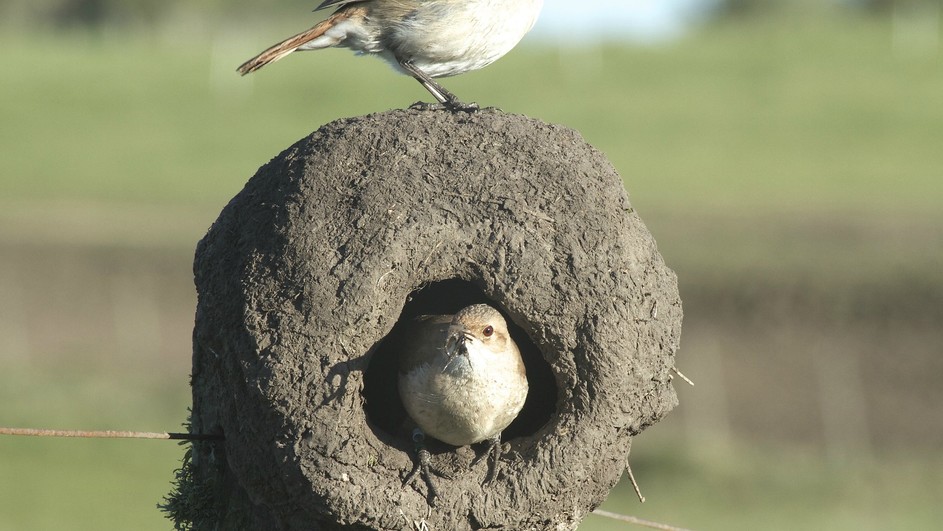Nature
Animal Homes – Natural Born Engineers
Synopsis
A home is a safe and secure structure that protects us from the things we cannot control, like the weather and intruders. To most, a home’s essential purpose is to provide a stable and safe location for raising a family.
Animals build homes for very similar reasons to our own – but they have been doing it for much longer. Their homes are built with great complexity, usually with found materials, but sometimes with materials made from their own bodies.
While we marvel at the perfect orb of a spider’s web or the soft lichen-covered cup of a hummingbird’s nest, we realise that these structures frequently exceed the capacities of human engineered materials.
Animal home building is all around us – and yet is often overlooked as an intriguing aspect of the natural world and animal behaviour. This three-part series peers deep into the lives of animal homebuilders across the globe in a variety of habitats, to explore the fascinating world of animal architecture and home life.
Ecologist Chris Morgan is hosting the show and acts, in part, as our animal real estate agent, evaluating animal homes, their material, location, neighbourhood and aesthetics. With the help of CGI and graphical overlays we highlight engineering principles of animal homes, while Chris Morgan tries to construct a nest in a specially created warehouse setting.
We investigate how skillful and diverse animal engineering and architecture can be, and explore the intriguing behaviours and social interactions that take place in and around animal homes.
THE SERIES
Episode 1: THE NEST
This episode focuses on nests as an architectural and engineering marvel and the center of family life, reproduction, the raising of offspring and defense of the family. Most nests are built for one season, though some are refurbished year after year and can last for generations – like in the case of the Ospreys: we witness a pair, re-building a huge nest from scratch after their old home was destroyed in a storm. We see the impressive Brush turkey, who builds his nest by scraping together soil, leaves and twigs to create a big mound in which these birds lay their eggs – that are then being bred thanks to the warmth, resulting from the decaying organic matter. And we follow a pair of ovenbirds that is perfecting their smooth mud dome that’s precisely placed on top of a fence post. As animals build with local materials, every nest is rich with evidence of its location. Also, the nest of each species has its own specific construction plan. Presenter Chris Morgan tries to build a bird nest from branches, twigs and other parts of plants. Then, he meets with an engineer who puts Chris’ nest to the test in his laboratory – with crushing results…
Episode 2: LOCATION, LOCATION, LOCATION
In this part, we will plunge deeper into the topic of location. A place that is safe, where it is possible to hunt and gather food, and which offers a secure start for the offspring isn’t found easily. Series host Chris Morgan starts at the Snake River in Wyoming, where he investigates the homes of the most successful natural landscape architect – the Beaver. Beavers not only build very complex dens, but also unique transport canals and dams of great variety – this way changing their environment and creating a new landscape. For a bird nest, a tree seems a common location – but in the case of the Hooded merganser it’s not the treetop: we witness a mother, making her nest in a cave in a tree trunk that has been created, perhaps by squirrels or racoons – and shaped by generations of Hooded merganser moms. When the chicks have hatched, their mother leaves them. The young ducks’ only chance is to climb out of the hole – and jump to the ground, 15 meters below. Amazingly, the duck chicks somehow survive this jump start into life. Being a bear expert, Chris Morgan is keen to get insight into a bear’s den – this could be anything from a pile of tree trunks to a natural rock cave. Chris joins a group of scientists who are investigating the Black bear population in the Allegheny Mountains during the winter. In one cave, they find a hibernating bear mother with four small cubs, all of which are healthy and in perfect condition – a most memorable moment for Chris, as well as for this series…
Episode 3: ANIMAL CITIES
This episode investigates colonial homes in which animals live in dense concentrations – and where millions of individuals struggle to make a living. Chris Morgan visits “Puffin City” – a colony of 40,000 these charismatic sea birds on the Hebrides islands, off the coast of Scotland. Chris explores what’s going on in the Puffins’ underground burrows – and why these birds are forming such huge communities. One explanation is the widespread strategy of safety in numbers. Potential prey animals can work together for protection – but so can predators. Ecuador’s jungle houses a spider of the social Anelosimus group, that combines forces to hunt – and colonies include up to 10,000 spiders, with dense veils of sticky webbing draping down through the jungle trees. Meanwhile, Australian skinks use their elaborately designed tunnel homes with as many as 20 entrances as a retreat from the burning sun. Gopher tortoises build their residences underground – and will soon have company: to find shelter against forest fires, rattlesnakes and rabbits, frogs and mice are relying on the tortoise and its underground homes. By sending tiny cameras into this remarkable compound, we experience a world unseen before.
New science, a fresh understanding and breakthrough technologies allow us to look into this most intimate aspect of animal lives – their home. The result is an original series that takes the viewer on an inspiring journey into a world often overlooked, and break new ground as we highlight new scientific discoveries in the fields of animal behaviour, animal cognition and evolution.
Flexible boroscopes and special cameras give us unprecedented views inside animal homes – without disturbing natural behaviour. Time lapse and slow motion images reveal new details, and tiny HD cameras capture intimate, never before seen footage directly in the heart of the animals’ homes. Even more, a blend of satellite imagery, CGI and 3D animation helps getting new insights into locations, nests and burrows, and illustrates them in an informative manner.
All in all, this amazing series comes to a conclusion – there’s just no place like home…
A production of Coneflower Productions and THIRTEEN Productions LLC in co-production with Terra Mater Factual Studios









